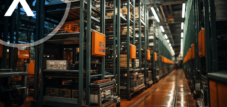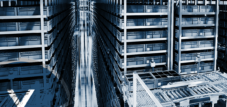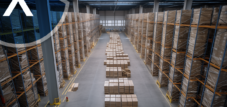Retrofit in the high-bay warehouse: Targeted innovations pay off – high-bay systems with stacker cranes and pallet conveyor technology
Language selection 📢
Published on: October 24, 2023 / update from: October 24, 2023 - Author: Konrad Wolfenstein
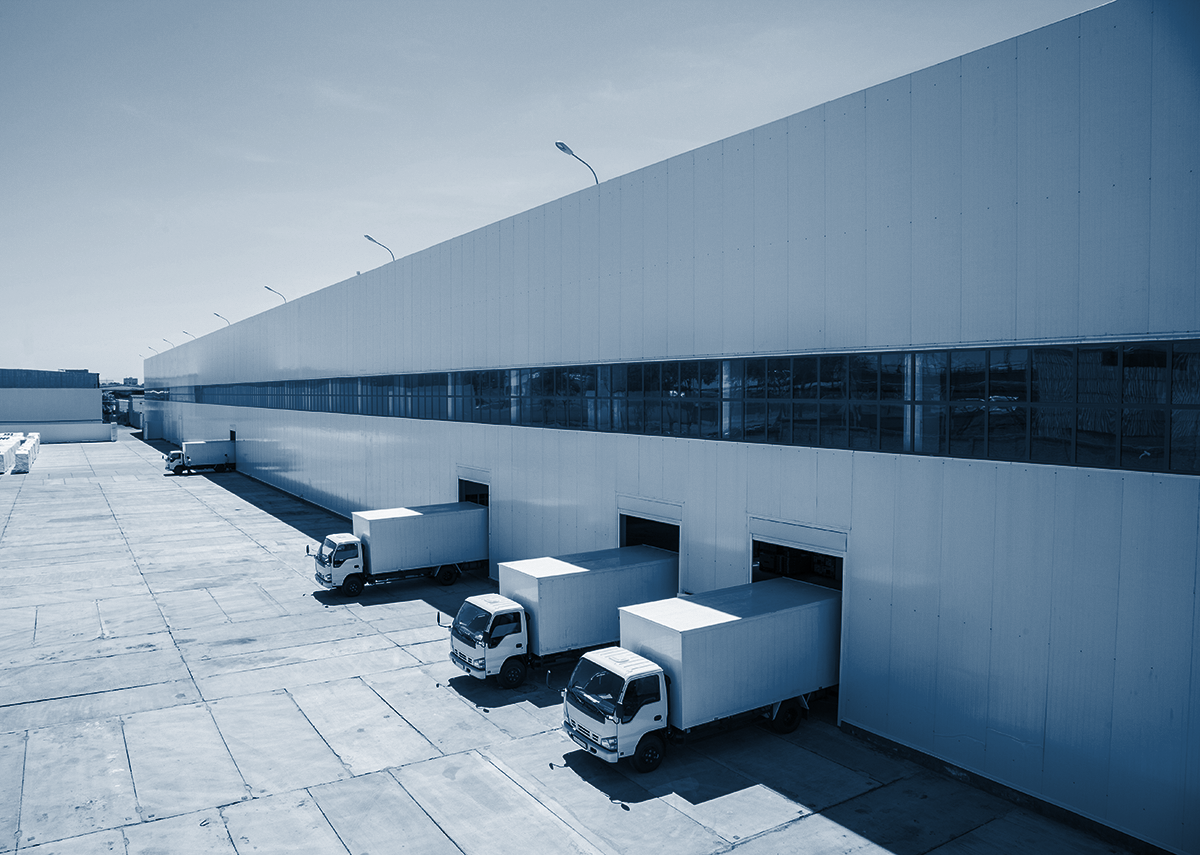
Symbolic image: Retrofit in the high-bay warehouse – targeted innovations pay off – Image: Xpert.Digital
🏭 Retrofit in the high-bay warehouse: Targeted renovations pay off
A solidly constructed high-bay warehouse can meet the operator's performance requirements with virtually no restrictions, even after 20 years of intensive use. Assuming regular maintenance and servicing of all components, the service life of storage and retrieval machines or pallet conveyor technology can be extended far beyond this through a targeted retrofit. With the support of LogBer, costly new investments can be avoided in a comparatively simple way.
💼 Success story: Longevity through retrofit
"Renewal and modernize outdated control and drive technology is still economical and useful for a high-bay warehouse even after an operating time of more than 30 years," says Gerhard Keller, Managing Director of Logber GmbH. "As a rule, such an investment is copied over 15 to 20 years, but in practice it often works far beyond this period with deployment times 24/7 and high performance requirements." As an example, Gerhard Keller mentions a system built in 1980, which was subjected to a targeted retrofit 15 years ago after a concept developed by Logber and is still used after more than four decades.
📊 Logistics planner with relevant experience
However, in order for retrofitting in high-bay warehouses to be successful, extensive preparatory work and experienced logistics planners who know how to deal with the imponderables of such a project are required. In this specific case, LogBer accompanied the renewal of the entire control technology of both the storage and retrieval machines and the pallet conveyor technology. All drives of the storage and retrieval machines were replaced with energy-efficient and easy-starting drives. Rails that were worn on one side had to be sanded down and a stacker crane that had been damaged by the high dynamic forces had to be completely replaced because significant weld cracks had formed in the carriage and mast.
🛠️ Challenges and solutions
Before that, however, there were still a few hurdles to overcome, reports Logber Managing Director Gerhard Keller: “There was no longer the manufacturer and installer of the high-rack system. Nevertheless, in the logistics market, we found three companies specializing in retrofit from third -party systems for an initial inspection and assessment of the possible costs. ” Finally, the systems were modernized when the operation is running: Controls (PLC, sensors, etc.) were brought to the state of the art, the drive technology was replaced by more energy-efficient and slightly starting systems, resolved driving and guide rails, driving rails are ground, wheels renewed and finally the warehouse management and material flow control adjusted in a contemporary logistical requirements.
📝 Careful planning and step-by-step approach
Nevertheless, Gerhard Keller states: "The preparation, planning and implementation of a retrofit/reengineering project is very complex overall, and the necessary measures are difficult to calculate in advance." In order to be able to assess the effort as precisely as possible, Logber divides the procedure in four phases: The analysis of the actual situation and operational requirements follow the development of the retrofit concept, after which it continues with the detailed planning and tendering of the necessary work, after all, implementation, tests and commissioning follow.
💰 Is it worth the effort?
"The bottom line is quite large, but it is guaranteed to be worth it," summarizes Gerhard Keller. The retrofit of the system, which was implemented in 1980, ultimately unnecessary the construction of a new high -bay warehouse - and reduced the costs to only 20 percent of the otherwise required new investments.
In today's world, when sustainability and resource conservation are becoming increasingly important, the history of retrofitting in high-bay warehouses shows how existing systems can be used reliably and efficiently for many years to come through clever modernization and maintenance. It is an example of how technical innovation and logistics planning go hand in hand to increase the efficiency of operations while reducing environmental impact.
💼 LogBer GmbH
LogBer GmbH has been planning solutions and optimizing processes for efficient logistics for more than 25 years. As an independent partner, planner and project manager, LogBer accompanies projects holistically, from analysis and planning to tendering and implementation - in all industries from manual to fully automated warehouses to entire locations.
📣 Similar topics
- 🏭 High bay warehouse retrofit: maximizing service life
- 🌟 Sustainable warehouse logistics: The value of retrofitting
- 💼 Successful modernization of high-bay warehouses
- 🔄 Old becomes new: high bay warehouse retrofit projects
- 📈 Increased efficiency through high-bay warehouse retrofit
- 🔧 Expert tips for warehouse modernization
- 🏗️ High-bay warehouse: maintenance and retrofit in focus
- 🏢 Logistical sustainability: high-bay warehouse optimization
- 💹 Cost efficiency through high-bay warehouse retrofit
- 🏆 Success stories: high-bay warehouse revitalization
#️⃣ Hashtags: #high-bay warehouse #retrofit #warehouse logistics #modernization #increasing efficiency
🏢🌿 Logistical sustainability: high-bay warehouse optimization
Logistics sustainability is playing an increasingly important role in the business world today. Companies are increasingly realizing that they not only have to pay attention to economic efficiency, but also to ecological and social responsibility. An important component in this context is the optimization of high-bay warehouses, as these can have a significant impact on a company's environmental balance and operating costs.
High-bay warehouses are widely used in many industries and are used to store large quantities of goods in a small space. They are often highly automated and offer many advantages, such as better use of space and faster picking of products. However, there are some important aspects that should be taken into account when optimizing these warehouses to improve their logistical sustainability.
1. 🌍 Energy efficiency and resource utilization
The energy efficiency of a high-bay warehouse is crucial to its sustainability. It is important to ensure that lighting, climate control and warehouse automation systems are operating as efficiently as possible. This can be achieved through the use of LED lighting, intelligent control technology and regular maintenance.
In addition, resource utilization should be optimized. This includes minimizing packaging materials and eliminating waste when storing and transporting goods. A smart shelving system can help reduce space requirements and make storing products more efficient.
2. ♻️ Sustainable materials and construction
When planning and building a high-bay warehouse, preference should be given to sustainable materials and construction methods. This can include the use of recycled building materials, energy-efficient insulation materials and environmentally friendly roof and facade systems. A well-insulated warehouse can reduce energy consumption for air conditioning and keep the temperature in storage areas stable.
3. 🤖 Automation and robotics
Automation technology and robotics play an important role in optimizing high-bay warehouses. Robots can work more efficiently than humans and can help speed up the storage and transportation of products. This can not only reduce operating costs, but also reduce energy consumption since robots require less energy than human workers.
However, it is important to ensure that the robots and automation systems used are energy efficient and easy to maintain. This can be achieved through the use of intelligent control systems and regular training for operating personnel.
4. 🌐 Sustainable sourcing and supply chain
Logistics sustainability does not end with the warehouse, but extends to the entire supply chain. Companies should strive to develop sustainable sourcing practices and select suppliers that use environmentally friendly materials and processes. This can help reduce the environmental footprint of the entire supply chain.
In addition, supply chain logistics planning should be designed in such a way that transport routes are optimized and emissions are minimized. This can be achieved, for example, by using environmentally friendly means of transport and bundling deliveries.
5. 📊 Data analysis and optimization
Continuous analysis of data is crucial for optimizing a high-bay warehouse. Modern technologies such as the Internet of Things (IoT) make it possible to collect and analyze a variety of data from the warehouse. This can help identify and resolve bottlenecks and inefficient processes.
By using data, inventory levels can be optimized, product picking can be improved, and storage capacity can be maximized. This not only results in better operational efficiency, but also a reduction in energy consumption and environmental impact.
6. 👩🔧 Employee engagement and training
Employees play an important role in ensuring the logistical sustainability of a high-bay warehouse. It is important to sensitize and train them on sustainable practices. This can help ensure they adopt energy efficient behaviors and minimize waste.
In addition, employees should be included in the optimization process. They can provide valuable insights and ideas for improving warehouse processes and reducing environmental impact.
🏢📦 Optimization of high-bay warehouses
Optimizing high-bay warehouses for logistical sustainability is a complex task that includes various aspects of warehousing and supply chain. Companies that choose sustainable practices can not only reduce their environmental impact, but also reduce long-term costs and strengthen their image as an environmentally conscious company.
The above measures, such as improving energy efficiency, using sustainable materials and technologies, automation and robotics, supply chain optimization, data analysis and employee engagement, are crucial to success in this area. Companies should be aware that logistics sustainability is not only a commitment to the environment, but can also provide economic benefits.
📣 Similar topics
- 🌿 Sustainable logistics: Paths to ecological efficiency
- 🏗️ Green building: Sustainable materials for high-bay warehouses
- 🤖 Automation in the warehouse: Robots and their role in sustainability
- 🚚 Environmentally friendly supply chains: Sustainable sourcing and transportation
- 📊 Data analysis for sustainability: optimization of warehouse processes
- 👩🏭 Employee commitment to the environment: training and participation
- 💡 Logistics of the future: Sustainability as a competitive advantage
- 🌍 Ecological responsibility in the business world
- 💰 Reduce costs through sustainable storage
- 🔍 Sustainable high-bay warehouses: A holistic view
#️⃣ Hashtags: #sustainability #logistics #high-bay warehouse #environmental protection #efficiency
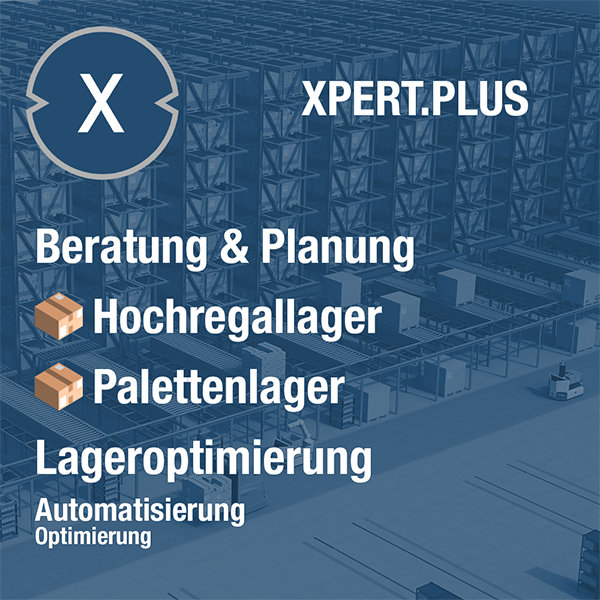
Xpert.Plus warehouse optimization - high-bay warehouses such as pallet warehouses consulting and planning
Plan your solar system for the most common applications conveniently online with our solar system planner!
With our user-friendly solar system planner you can plan your individual solar system online. Whether you need a solar system for your home, your business or for agricultural purposes, our planner offers you the opportunity to take your specific requirements into account and develop a tailor-made solution.
The planning process is simple and intuitive. You simply enter relevant information. Our planner takes this information into account and creates a tailor-made solar system that meets your needs. You can try out different options and configurations to find the optimal solar system for your application.
Additionally, you can save your plan to review later or share with others. Our customer service team is also available to answer your questions and provide support to ensure your solar system is optimally planned.
Use our solar system planner to plan your individual solar system for the most common applications and advance the transition to clean energy. Start now and take an important step towards sustainability and energy independence!

The solar system planner for the most common applications: Plan the solar system online here - Image: Xpert.Digital
More about it here:
We are there for you - advice - planning - implementation - project management
☑️ Smart City & Factory: Industry expert for energetic 5G buildings and halls as well as advice and installation of solar systems
☑️ Xpert.Plus - logistics consulting and logistics optimization
☑️ Industry expert, here with his own Xpert.Digital Industry Hub with over 2,500 specialist articles
I would be happy to serve as your personal advisor.
You can contact me by filling out the contact form below or simply call me on +49 89 89 674 804 (Munich) .
I'm looking forward to our joint project.
Xpert.Digital - Konrad Wolfenstein
Xpert.Digital is a hub for industry with a focus on digitalization, mechanical engineering, logistics/intralogistics and photovoltaics.
With our 360° business development solution, we support well-known companies from new business to after sales.
Market intelligence, smarketing, marketing automation, content development, PR, mail campaigns, personalized social media and lead nurturing are part of our digital tools.
You can find out more at: www.xpert.digital - www.xpert.solar - www.xpert.plus







